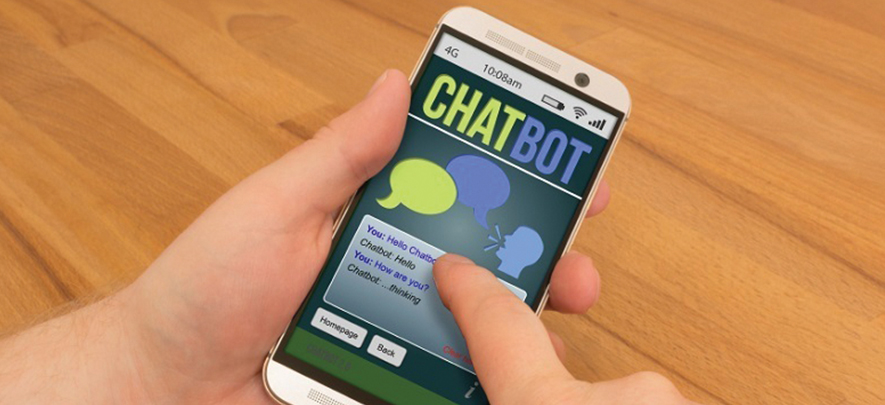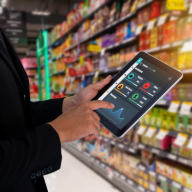Say it with bots

Digital & Technology
373 week ago — 7 min read
Chatbots are perhaps the hottest artificial intelligence topic right now. When speaking in reference to them Satya Nadella, CEO, Microsoft said, “As an industry, we are on the cusp of a new frontier that pairs the power of natural human language with advanced machine intelligence.” He couldn’t be more right.
Chatbots are changing the way business is conducted across the globe and disrupting entire markets. A whole new era of cognitive business has begun. Along with technologies like Cloud computing, IoT and others, bots are prepared to transform human lives. Moreover, the chatbot economy is quite promising too. Valued at $133 million in 2015, the Chatbot market is predicted to grow to $994.5 million by 2024.
Chatbots have application in a variety of industries, ranging from healthcare to logistics. One key industry where they can really make a significant impact is retail. Currently, retailers, the world over, are facing stiff competition. With costs of maintaining a store rising and online e-commerce players eating away their revenues, they are in dire need of bringing something more to the table than just selling items. They need to improve the shopping experience for their customers and chatbots can really play a crucial role here.
With the help of chatbots, shopping at the retail stores will become less administrative. Retailers would be able to make the stores more experiential as they leverage chatbots to cover FAQs, inventory check and other use cases.
What are Chatbots?
In plain simple terms, they are computer programs designed to simulate conversations with humans, respond meaningfully to their queries and be of assistance to them in myriad ways. The first chatbot, Eliza was built in 1966 by Joseph Weizenbaum at MIT Artificial Intelligence Laboratory. It primarily provided a parody of a conversation that would take place in the initial few minutes of a meeting with a psychiatrist.
Since then, chatbots have evolved significantly and are now much more capable. The chatbots of today use Natural Language Procial media. Chatbots live on messaging platforms and can allow brands to communicate directly with their customers instead of having to divert them to a website or an app. Since customers are used to these messaging platforms, it makes sense to engage with them there. The retail landscape is currently being dominated by online players who rely heavily on cutting-edge technology to outdo others. Retailers are keen on using technology to cater to the growing needs of the digital savvy customers.
Chatbots offer them an opportunity to stay competitive and relevant in the market. Let’s look at some ways chatbots can prove to be of value to retailers.
- Chatbots can be deployed across multiple platforms and help increase the outreach of the retail brand. The future is about Omni-channel presence and chatbots help achieve that.
- Chatbots have the ability to understand messages, analyse customer behaviour by going through their purchasing history, connect the dots and offer a curated list of products. This helps retailers offer a personalised service and take their targeting capabilities to a whole new level.
- They can provide assistance to retail sales associates by providing quick and easy access to information. This can help them respond better to customer complaints and queries thereby improving the standard of customer service also.
- They can offer 24/7 customer service and greatly reduce the burden of existing sales and support team. Simple queries related to store hours, return policy and other routine aspects can be easily answered. Even advanced level queries can be managed and then there is always the option of escalating the matter to a human representative who can then take control of the situation.
- They can be used to conduct surveys, take feedback and get insights from the customers. Given the chatty interface of the bot, there is less survey fatigue and quality of responses is much higher.
- They can manage the loyalty program of a brand by engaging with the customers and giving them suggestions as to how they can best use their earned points. Using this, customers can be provided a personalised service.
- They can help retailers in cross-selling and up-selling. A bot can start an interaction with a customer to suggest different products based on the interest of the customer and at the opportune time try to cross or up-sell other items.
These are some of the many use cases for chatbots in the retail space. There is immense potential in the way they can empower marketers in retail to better engage their audience. Using chatbots retailers can make themselves available to customers at the right time, right place with the right information.
The key to success lies in leveraging this technology in the right manner and avoiding common pitfalls. As chatbots evolve and customers grasp their use, we will see wider acceptance.
To explore business opportunities, link with us by clicking on the 'Invite' button on our eBiz Card.
Article contributed by Punit Modhgil for STOrai Magazine
Disclaimer: The views and opinions expressed in this article are those of the author and do not necessarily reflect the views, official policy or position of GlobalLinker.
Most read this week
Trending
Entrepreneurship 1 week ago















Comments
Please login or Register to join the discussion